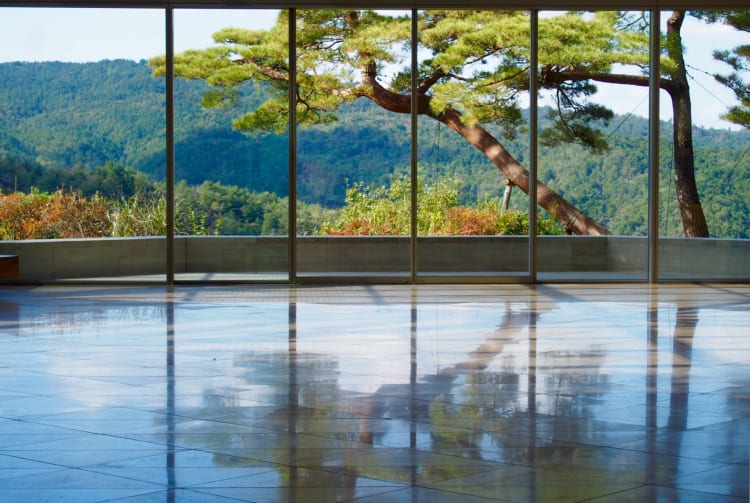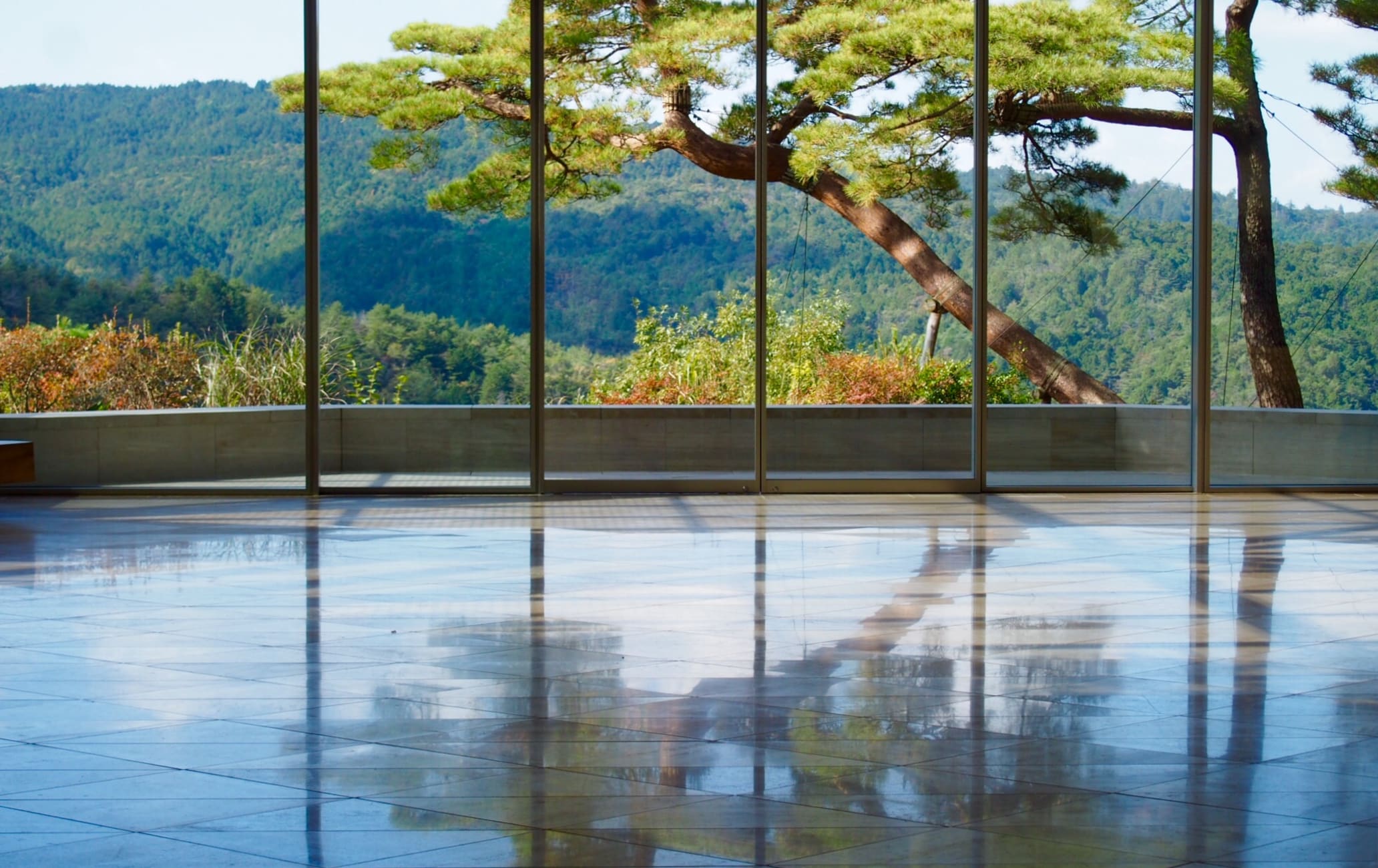Un véritable Shangri-La
Le musée de Miho est situé au cœur des splendides montagnes de Shigaraki et a été conçu par l'architecte sino-américain I.M. Pei, notamment connu pour avoir conçu la pyramide de verre du musée du Louvre à Paris.
Pei a imaginé une approche évocatrice et sereine du musée, inspirée de l'utopie éthérée décrite dans le Taohua Yuan Ji (Le printemps des fleurs de pêcher), un ouvrage ancien écrit par le poète chinois Tao Yuanming. Les visiteurs sont emmenés le long d'une allée bordée de cerisiers pleureurs, à travers un tunnel et sur un pont suspendu avant d'arriver au musée.
Comment s'y rendre
Depuis Kyoto, prenez la ligne principale JR Tokaido jusqu'à la gare d'Ishiyama.
Prenez ensuite le bus Teisan n°150, en direction du musée de Miho (50 minutes de trajet). Le bus part du quai 3, et sa destination est clairement indiquée aussi bien en japonais qu'en anglais.

Anecdotes
Environ 250 à 500 œuvres sont exposées à la fois
Environ les trois quarts du bâtiment sont sculptés dans la montagne
Une passionnée de beauté
La collection commencée par la fondatrice, Mihoko Koyama (1910-2003), est conçue pour répondre à sa vision de la promotion de la beauté, de la paix et de la joie à travers l'art. Elle comprend un large éventail d'œuvres d'art japonaises, ainsi que des œuvres anciennes provenant de régions telles que l'Égypte, la Grèce, Rome, la Chine, l'Asie occidentale et l'Asie du Sud.
Une architecture aussi étonnante que l'œuvre qu'elle abrite
Environ 80 % du musée de Miho a été construit sous terre afin de préserver le milieu naturel environnant. Une grande partie de la structure est dissimulée dans le flanc de la montagne, à l'abri des regards.
En pénétrant par une entrée discrète, le visiteur se trouve entouré de murs calcaires couleur miel, la lumière se diffusant à partir d'un toit en verre, le tout au milieu d'un panorama de montagnes qui s'étendent progressivement à l'horizon. L'ensemble de la toiture est constitué de cadres composés de combinaisons géométriques de triangles, une forme choisie pour sa simplicité. Le grand espace formé par le toit met en évidence sa beauté structurelle exceptionnelle.
En quittant l'espace d'exposition, après avoir été immergé dans des œuvres d'art orientales et occidentales, le visiteur a le sentiment de pénétrer dans le monde de la nature grâce à la lumière et aux paysages naturels omniprésents dans l'espace.
Le bâtiment a été conçu pour que les visiteurs puissent profiter d'un espace d'introspection tout en découvrant la beauté sous ses différentes formes. Comme l'a déclaré Pei, "Je pense que vous pouvez voir une tentative très consciente de ma part de rendre la silhouette du bâtiment agréable dans le paysage naturel".

















































